Welcome to Gibtown, the last 'freakshow' town in America
Welcome to Gibtown, the last 'freakshow' town in America
With the demise of the carnival, an important slice of American history risks being lost – but the residents of Gibsonton, Florida, are trying to keep the legacy of the town’s famous ‘freaks’ alive
For those who didn’t quite fit elsewhere, Gibtown was a utopia. Its first settlers, the Giant, and his wife, the Half-Woman, ran a campsite, a bakeshop and the fire department. The post office catered to little people with extra-low counters, and the beer hall had custom-built chairs for the Fat Ladies and the Tallest Man. Special zoning regulations allowed residents to keep and train exotic animals in their gardens. Siamese-twin sisters ran a fruit stand. Three factories manufactured Ferris wheels and carousels.
Or at least that’s how Ward Hall, aka the King of Sideshow, remembers it.
In the golden days of American carnival, all roads led to Gibsonton, Florida. The self-defined, 14,900-inhabitant town 12 miles south of Tampa became the industry capital. “Carny Town” was a fabled place where everyone had run away with the circus.
When Ward arrived in 1967, it was home to up to 100 self-defined “human oddities”, in addition to several thousand “carnies”. Balmy winter weather offered a foothold in a nomadic lifestyle, where rides could be repaired, big cats trained (“every day, or they forget”) and stunts practiced during the off-season. It was a safe haven, away from prying eyes.

Before the internet, radio and TV, sideshow was sold as “edutainment”. As a show organizer, Ward promised visitors what they had never seen before, assuring them they would be shocked and amazed.
The “freaks” came in three categories: self-made (the tattooed lady), working acts (sword swallowers, fire breathers, knife throwers) and the natural-born. There was Betty Lou Williams, who had her baby sister growing out of her abdomen. You could admire Priscilla the Monkey Girl, who had a double set of teeth and silky black hair covering her body (she eloped with the Alligator Boy, with a skin condition making his skin reptile-scaly). You could also meet Lobster Boy, who only had two fingers on each hand.
As a manager, showman and stand-in father figure, Ward Hall worked with them all.
These days, one of America’s most controversial entertainment legacies is all but extinct: Ward’s World of Wonders is the last legitimate 10-in-1 – 10 acts for the price of one – sideshow in America. “The public loves the show,” Ward, now 84, insists. “Otherwise I wouldn’t still be in the business after 70 years.”
Where society saw disability, Ward saw business opportunity and star potential. In showbiz since age 14, Ward made a living selling the extraordinary, macabre and bizarre across America: two-headed animals, three Native American boys wrestling alligators (one lost a finger – “There was danger to it!”), monkeys in race cars, a wax replica of The Last Supper, a man bare-handedly milking rattlesnakes, foetuses in glass bottles, and human “freaks”.
Today the exhibition of “extraordinary bodies” remains illegal in several states, with laws reflecting a discourse of victimization. Michigan and Pennsylvania penal codes, for instance, prohibit the exhibition of any “deformed human being or human monstrosity” except for scientific purposes. That the performers are consensual adults, highly paid and not necessarily suffering, is often overlooked.
Several of Ward’s performers featured in Todd Browning’s 1932 film Freaks (widely banned as too graphic a display of physical disabilities). Their collectible portraits now fetch hundreds of dollars on eBay. “Of course I exploited them – and the more I exploited them, the more money they made,” Ward says. Had he not been exploited, Elvis Presley too, Ward insists, would still be singing in a some beer joint in Tupelo, Mississippi.
Ward turned pity into fascination, and unfortunate circumstances into superpowers. Dick Brisbane, with feet growing directly from his hips, causing a waddling walk, became Penguin Boy. Stanley Barent, born with stumps for arms, became Sealo the Seal Boy. With the right sales pitch, anything – and anyone – could be exhibited.
“These people were not handicapped; at least in their minds they were not,” Ward insists, recalling Louise Capps Hill, the armless girl who drove a tractor, milked cows, played guitar and raised her children on her farm. “You and I will see them and say, ‘Oh my God, what handicap to have no arms at all’ – but there was nothing that girl couldn’t do.”
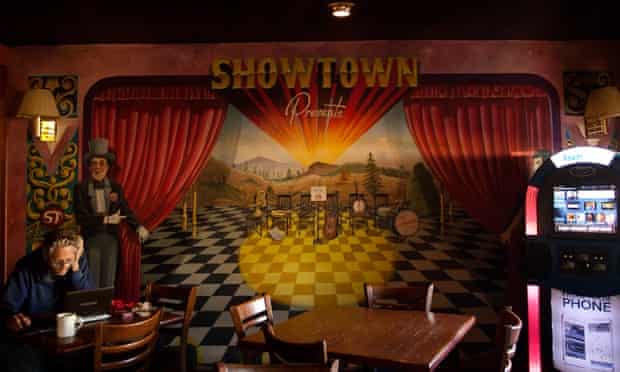
Todd Robbins, a sideshow historian and performer, explains that such carnivals were a fin de siècle zeitgeist where anything was possible. Exemplifying remarkable resilience and the ability to overcome obstacles – Frog Boy, for instance, telling the audience about his condition while doing cigarette tricks using only his mouth – the freakshow was a direct extension of the American dream itself.
“For the first hundred years of us as a nation, the majority of people came from elsewhere,” he explains. “Everyone here was the other; an outsider. They came here because they had a dream and an idea that tomorrow was gonna be a better day if they only worked hard enough and were smart. Sideshow was only an extreme version of that. Anything is possible and here’s a good example: if it’s possible to eat fire, then I can be president of the USA.”
On behalf of an already waning trade, Ward spearheaded a campaign against a 1921 Florida statute banning the exhibition of malformed, deformed or disfigured humans. He was successful: three years later, judges held the sideshow prohibition “unconstitutional” – because people with deviating bodies have the right to work.
This right to work was crucial to Ward, who approached his performers matter-of-factly with well-meant pragmatism – people are going to gawk anyway, why not make them pay for the privilege? He taught them how to make money, and brought them into a makeshift family (“I was the Papa,” he says proudly). Many stayed with him all their lives.
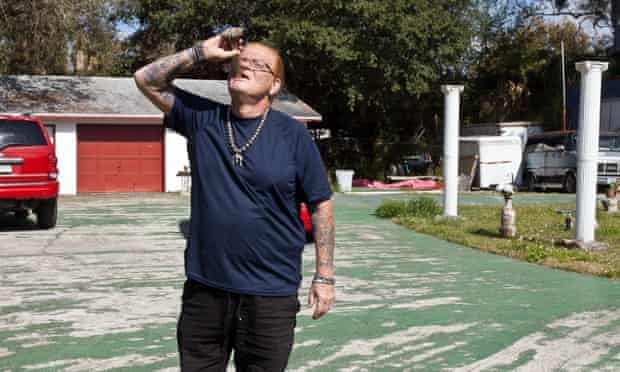
The carnival became a tight-knit network of solidarity: the “carny code”, which prescribed unconditional support for one another, was soon developed and a secret language – carny – remained incomprehensible to outsiders. The International Independent Showmen’s Association still runs its own miniature welfare system, providing retirement homes for those in need.
Its chairman, Lee Stevens, is a New York City native who became a first-generation performer in his teens. He still romanticizes the hardship associated with the lifestyle: washing from rivers or bucket; living in the back of a wagon; traveling highways at night, working by day, regardless of weather. To him, the carnival embodied the very freedom and opportunity that was America.
“It’s the entrepreneurship of it all,” he explains. “It’s open to anyone with an idea; to anybody who wanna partake in it all. It goes back to having freedom of choice, of not having to sell your soul to a company store, work 9-5 for a factory and never getting anywhere beyond a minimum obligatory raise.”
Although sideshow originated in Europe, it was in America that it flourished. The second world war’s persecution of disabled people triggering a flight of “freaks” across the Atlantic. Not everyone managed: the Icelandic Giant found out his show’s dwarf harmonica players had all been murdered by the Nazis. Like many others, he ended up in Gibtown, his enormous silver-gold viking gown now hung away in the corner of the Showmen’s museum.
On the lush banks of the Alafia River, the unlikely community carved out a tropical paradise for themselves. The Tomaini couple arrived first, spreading the word over the carnival grapevine of a place of strawberry fields, orange groves and rivers full of fish, where locals didn’t shun show people. Conveniently close to Sarasota and with the railway passing through, the location was ideal. A chain migration sparked off as those operating rides, games and cotton candy stands followed suit. As the society grew, its residents named streets after themselves.
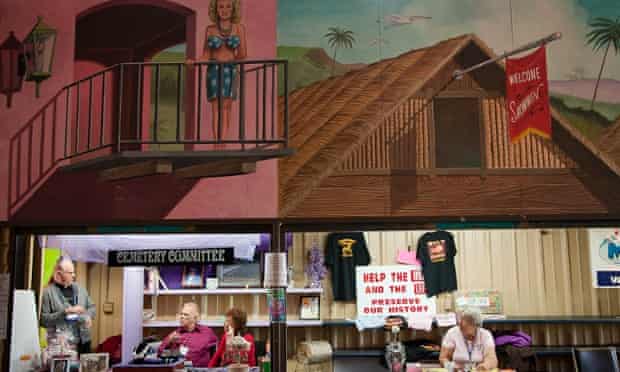
In return for their contribution to the local economy, residents of Hillsborough County were granted permission to keep carnival trailers, rides and animals in their gardens. Gibtown became a sanctuary, and the stigma associated with the trade was convenient as well: outsiders stayed away thanks to rumors about “carnies” stealing children. The world’s showtown capital remained a well-kept secret, purposely never a tourist destination.
Nowadays, Gibtown looks like any other American small town (the only town in Florida shrinking for the past 25 years, claims Ward). If you didn’t know it was there, you might drive straight through.
The “freaks” are gone, too. Ward’s last “human oddity”, Norbert Pete Terhune, or Poobah the fire-eating dwarf and King of Pygmys (once chief and sole inhabitant of Ward’s traveling Pygmy Village), passed away in 2012.
“We have people who just ruined the freakshow business,” Ward complains with a smirk. “We call them doctors. The medical science.” Deformities are now detected in the womb, and pregnancies terminated. Fewer “freaks” are born, and if they are, physical abnormalities are medically adjusted; Siamese twins can be separated at birth (“Thank God for that”). No one pays to see a fat man anymore (Ward’s last fat employee passed away in 2009, at 607lb).
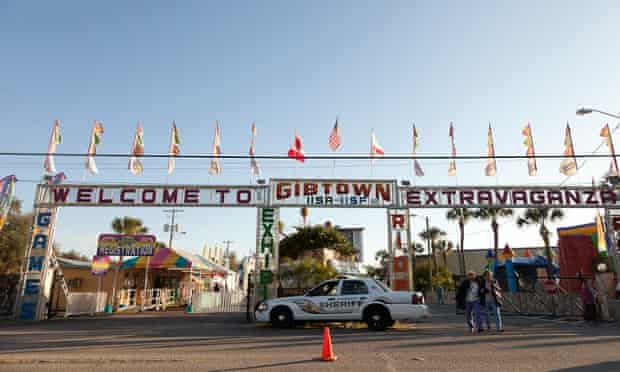
Simultaneously, discrimination laws opened doors for people with disabilities to pursue more conventional careers. With civil rights movements, gawking at those born different became taboo, and “freakshows” perceived as exploitative.
Ward’s World of Wonders now relies on illusions and working acts – like John “Red” Stuart the sword swallower, or the Gorilla Girl. The only “human oddity” is Popeye, a man who can pop his eyes out. When Gibtown’s visitors ask for the “freaks”, Ward directs them to the cemetery. There, sun-bleached textile flowers mark the graves of extraordinary performers such as the Lobster family, identifiable only under their real names.
“More than anything, the rise and fall of the freakshow is a story about society’s changing views on physical difference”, Brigham A Fordham, author of what might be the most substantial analysis on the legal discourse of sideshows, explains. “By necessity, sideshows can survive only so long as they offer something that their viewers find slightly more entertaining than offensive.”
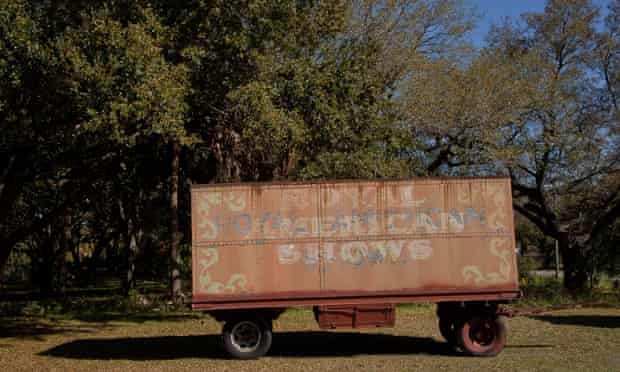
Passing a person with microcephaly in a diner as he gave us a tour of the town, Ward was suddenly reminded of Schlitzy the Pinhead. Mentally impaired and with a characteristic pointed head, Schlitzy had been adopted by another show; he had been, until then, hidden away by his embarrassed, wealthy parents in an attic in Santa Fe. When his legal guardian, the showowner, died, Schlitzy was taken out of the sideshow and put into an institution. He was devastated. Eventually rescued and brought back to the spotlight by Ward, Schlitzy was happy again.
The awkwardness surrounding disability can be counterproductive, argues Fordham. Like stripshows, sideshows may be offensive but outlawing them would only limit people’s right to expression. “If a little person wants to perform in a way that perpetuates stereotypes, should they not be able to show themselves for fear of ruining things for those who don’t want to be associated with that image?” he wonders. “It’s a tough call.”
Today, Ward wouldn’t work with people with mental disabilities. It’s a shame, he says, because the alternative – institutionalization – equals imprisonment. He sneers at Peta, do-gooders, “communists” and “political correctors” interfering in his business. “Political correctness is taking away the freedoms of America,” he says.

Meanwhile, the world is encroaching on Gibtown. A gigantic Walmart marks the arrival of chain corporations in a society priding itself on its individualism. Industry is expanding, low-income housing under construction. “In 20 years, all of this will be gone,” Ward says, gesticulating towards his house, which he shares with his life-partner Chris Christ and Red the sword swallower. As showmen become a minority, Ward believes it’s only a matter of time before even the zoning regulations disappear.
For the first time, the nearby Tampa State Fair decided not to feature a sideshow this year. The economic downturn closed down the carousel factories. All post office counters are average height. One man allegedly still keeps a few elephants, though they are currently working in Texas. Lamount Dais, the Human Volcano who practices fire-eating in a riverbank trailer park, is the only performer in sight.
With the demise of the carnival, and of Gibtown, an important slice of American history risks being lost – though residents try hard to keep the legacy alive. A metal replica of an enormous boot, crowdfunded by Concerned Citizens of Gibtown, marks the town’s entrance and the spot where the Giant’s Camp once stood. Downtown, the recently opened Showmen’s museum features antique rides and non-PC minstrel show posters.
“We hope that schoolchildren can come here to see that you can be whatever you aspire to be,” says Debbie Rivera, a museum associate. “That you can dream of something, work hard and make it happen.”
“Gibtown today is a sad old lady, in her finery and her makeup, that has seen her better years,” says David Doc Rivera, founder of the museum and self-imposed guardian of America’s carnival history. “It is an anachronism in the sense that it is more a city in someone’s imagination. Everything wears out; everything goes away.”
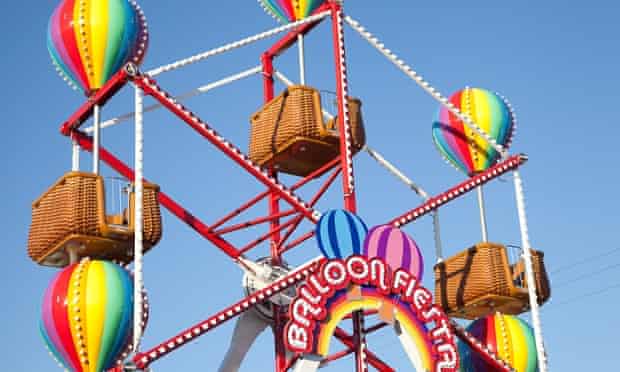
The King of Sideshow may well be the last man standing, admits Robbins the historian, describing him as “the greatest showman of our times”. Now Ward, who has starred in over 100 films, had three Smithsonian exhibitions, been honored in several halls of fame, sung at Carnegie Hall and performed at Madison Square garden, can’t always join the show on the road.
Referring to himself as a dinosaur and one of the last “human oddities” around, Ward is nonetheless adamant he hasn’t retired yet. His house is the closest Red the sword swallower has to a permanent address; their driveway, on which a British juggler spent the past few months training, is still lined with show equipment: plywood décor, banners, a worn circus wagon. Together all those performers created a family of their own – often, the only family they had.
“The sad fact is that there will come a day when Ward is gone,” Robbins says. “The day World of Wonders doesn’t go out anymore is the day the sideshow is gone.”


Comments
Post a Comment